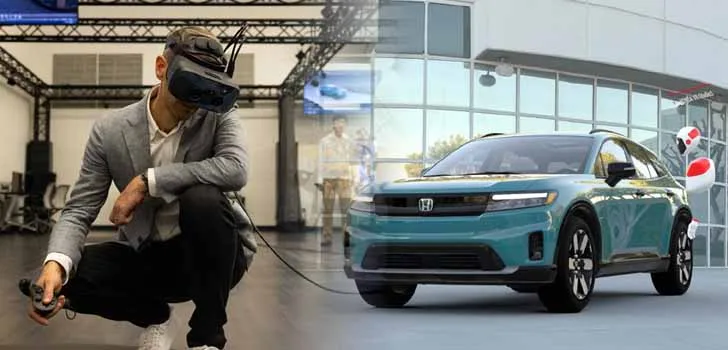Virtual reality technology has made significant advances in the past several years.
As time passes, developers devise additional features, invent new hardware, and find new uses for the platform.
Though many of VR’s implementations center around gaming, other applications have emerged.
In 2023, people have incorporated VR into healthcare, therapy, education, and job training.
Automobile manufacturers have found uses for VR technology in their vehicles, though generally from an entertainment standpoint.
Honda has begun utilizing VR technology in their vehicles, but not on the user end, at least at this point.
Currently, Honda is using VR to design vehicles, starting with the 2023 Pilot Trailsport and the 2024 Honda Prologue.
The company says VR quickly became a critical tool for its designers in developing mobility products.
Honda says it began exploring VR’s potential as a more-efficient design tool for creating better products six years ago.
According to Honda, its VR research gave designers the proper skills, equipment, and artistic ability during the pandemic.
“Incorporating virtual and augmented reality in the design process allowed our Honda engineers and designers to merge digital content and physical assets in a cohesive way to interact with what they’re experiencing and touching in an immersive environment,” says Honda Design VR Technology Leader Mathieu Geslin. “Honda Prologue was key to fully using VR in a data-led design process, with clay modeling as the verification tool, something we will carry forward into the development of other Honda products.”
VR Filled a Pandemic-Created Need
According to the company, COVID-19 travel restrictions played a significant role in Honda adopting VR as a design tool.
Honda says restrictions hampered its designers’ freedom to collaborate on the Prologue electric SUV.
The Honda’s Design Studio styling team in Los Angeles, who led the vehicle’s design, stepped in to bridge the gap.
Honda says the LA studio utilized VR to bridge the divide between global design and development teams.
Teams built a full-size mock-up of the Prologue’s exterior using traditional clay modeling methods but used VR to design the interior.
According to Honda, VR transformed the design process with unlimited colors and materials.
Honda says virtual reality also improved collaboration and facilitated quicker feedback.
Interior Project Design Lead Lisa Lee says VR prototyping removed limitations and created a more-refined production process.
But while Honda implements VR as a design tool, the company will continue to utilize traditional methods as needed.
“We don’t want to lose emotion and the human touch to Honda design, so we won’t pursue a purely digital approach, but we are really excited about Honda products that will be coming in the ffuture by leveraging VR technology,” says Geslin. “It’s an ongoing effort to further explore the technical capabilities of VR and AR in our development centers worldwide for cross-collaboration that will further enhance the appeal and quality of our products.”
Honda says the 2023 Honda Pilot was the first production model where the LA team used VR for product evaluation.
Among the tests was a color evaluation.
Honda says the evaluation allowed the color, materials, & finishes team to visualize trims holistically.
The process enabled instant feedback between design studios in Los Angeles and Japan.
Honda says its new Pilot will be available for sale this month.
Images: Honda

